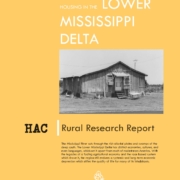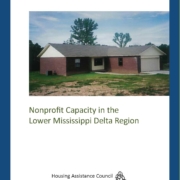In high-need regions, such as the Lower Mississippi Delta (LMD), there is a lack of affordable, decent housing, and a dwindling supply of resources to address these needs. Nonprofit housing developers are a critical resource in rural communities, as these entities are often responsible for a significant amount of the affordable housing provision that occurs (Cook et al, 2009). Despite their significance in the community development sector, very little is often known about the network of nonprofit organizations that operate in rural communities or the gaps in service that may exist in these regions.
When nonprofit organizations operate in high-need areas, such as the Lower Mississippi Delta, the impact of serving low-income individuals and families can be exponentially greater than under otherwise-available resources. Obtaining accurate, detailed information about some of the housing programs that are offered in the LMD will assist overall community development efforts, as stakeholders will have increased insight into the institutional resources these organizations provide and be better able to effectively plan for housing and economic development activities.
This guide provides an overview of nonprofit capacity in the Lower Mississippi Delta region with a focus on organizations that provide housing services. The guide highlights the programs offered by these organizations, identifies geographic service areas and gaps, and assesses capacity strengths and weaknesses within the region. Stakeholders can use this resource to assess the organizational infrastructure needs of the region, to better understand the assets in place, and to target initiatives.


